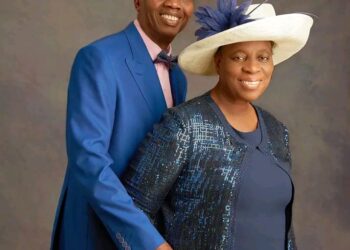Long before history was written in books, it was carved in stories, sung in chants, and remembered in the hearts of elders. Among the Yoruba, one of Africa’s most celebrated peoples, history begins not with dates but with myth — the myth of a descent from heaven, of gods shaping the earth, and of a sacred city called Ilé-Ifẹ̀.
Elders would say, “Ìtàn kì í tán nílé ayé” — stories never end in this world. To the Yoruba, the story of their origin is passed from generation to generation, not just for memory, but for meaning. It is a story where the mystical and the historical intertwine, where entertainment meets philosophy, and where identity is carried in proverbs.
The Golden Chain
The most popular tale begins in heaven, where Olódùmarè, the Supreme God, gave Odùduwà the task of creating land upon the waters below. With him were a handful of soil, a rooster to spread it, and a long golden chain.
Descending from the skies, Odùduwà poured the soil upon the waters, and the rooster scattered it, scratching and spreading until dry land emerged. This first dry land became Ilé-Ifẹ̀. It was here, the Yoruba believe the world began, and they accepted it as their spiritual roots.
This myth is not just fanciful; it is identity. Every Yoruba child raised on this tale understands that Ifẹ̀ is more than a town — it is a sacred symbol, the umbilical cord between heaven and earth. As another proverb goes, “A kì í mọ́ ilé tí a fi ń gbé ayé, ká má bọ́wọ̀ fún un” — one cannot know the ground on which the world rests and fail to respect it.
Odùduwà, Ancestor and King
Odùduwà is remembered not only as a divine figure but also as the first king. From him descended the royal lines of Yoruba kingdoms — Ọ̀yọ́, Ìjẹ̀bú, Kétu, Ìjẹ̀ṣà, and others. The Oòni of Ifẹ̀ today still claims direct descent from him, and in that claim lies both legitimacy and continuity.
Samuel Johnson, in his History of the Yorubas (1921), recorded that some believed Odùduwà migrated from the East — Mecca or even Egypt, before settling at Ifẹ̀. In Johnson’s account, the story blends myth with history, showing how the Yoruba themselves kept open the bridge between legend and reality.
Whichever version one believes, Odùduwà remains the father. The Yoruba, though spread across many kingdoms, still share a single ancestral name, a reminder of unity despite diversity.
Ifẹ̀ as Sacred Center
Ifẹ̀ became not just a birthplace but a spiritual capital. Its shrines, its priests, and its festivals kept alive the story of creation. The city is often described as Ilé-Ifẹ̀, Ilé ayé, the place where the world began.
Archaeology later confirmed that Ifẹ̀ was more than a mythic site. The terracotta and bronze heads discovered there, with their delicate, naturalistic features, proved that Ifẹ̀ was a thriving artistic and political center centuries ago. When the German explorer Leo Frobenius saw them in 1910, he thought he had stumbled upon the lost Atlantis. The bronzes, now dated to the 12th–15th centuries, are evidence that Ifẹ̀ was not only sacred in story but splendid in reality.
Conclusion of Part One
Thus, in the beginning, myth and history met at Ilé-Ifẹ̀. The Yoruba people saw their origin not just in the soil of the earth but in the descent of heaven itself. They built their identity on Odùduwà, the divine ancestor and king, and kept Ifẹ̀ as the everlasting cradle of their civilization.
Yet this is only the beginning. From Ifẹ̀, the Yoruba spread outwards, founding kingdoms, building empires, and shaping a history as grand as their myths.
In the next part, we will journey into the rise of those kingdoms, the glory of Ọ̀yọ́, and the resilience of a people whose story never ends.





